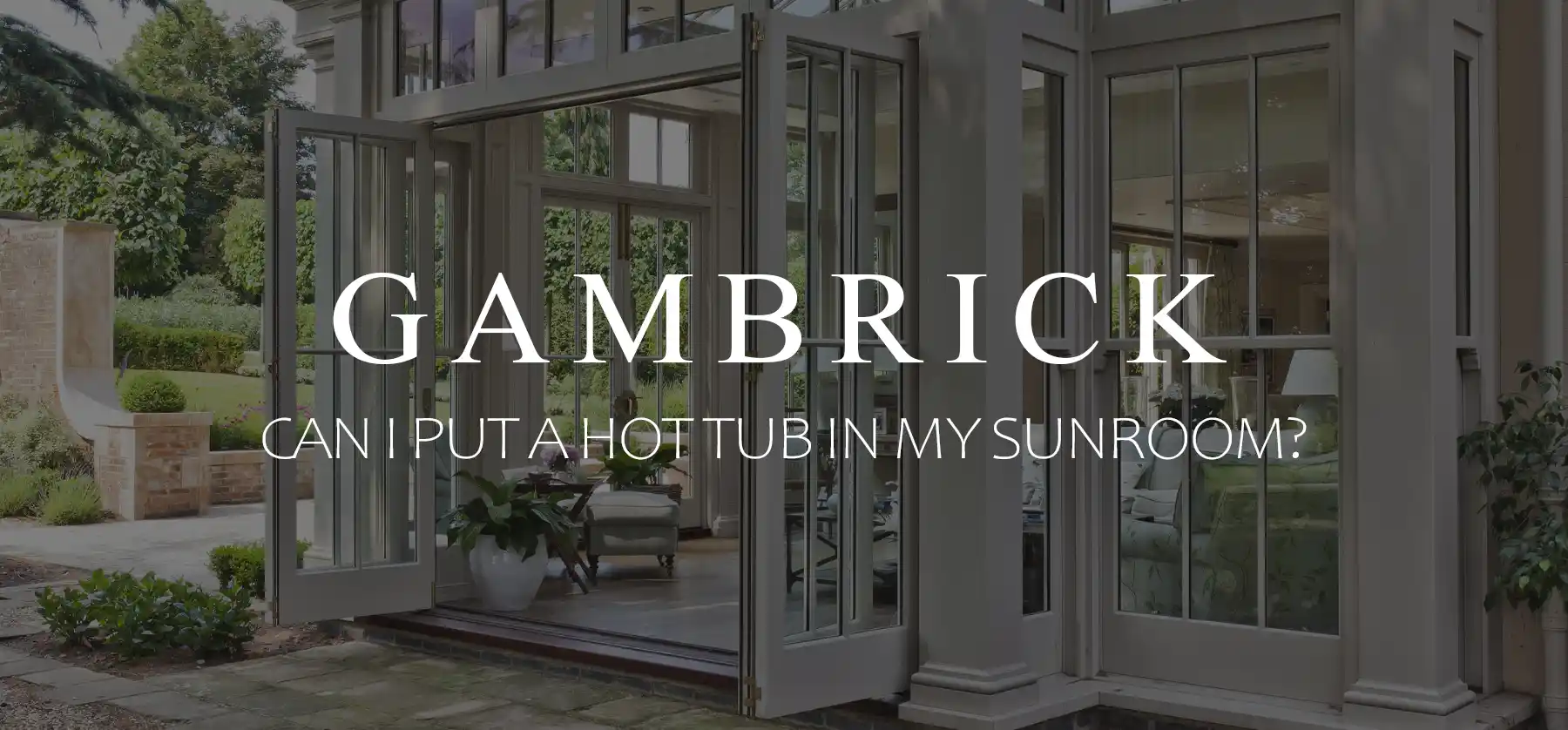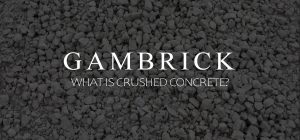
Can I Put A Hot Tub In My Sunroom?

By John Mazzuca | About | More Posts |
John Mazzuca is a custom home builder with over 25 years experience in the construction industry. John has designed, managed, and built hundreds of homes & construction projects.
You can put a hot tub in a sunroom as long as the structure can support the weight and high moisture levels. Proper ventilation, adequate support, and waterproofing are all essential to prevent mold and structural damage that can be caused by high humidity and the extreme weight of the hot tub. One of the benefits of having a sunroom is how versatile the space can be. They can be used as an exercise room, to grow plants, or simply relax by a fireplace while reading a book.
Hot tubs are extremely heavy when filled with water and people, so the sunroom’s foundation and framing must be designed to handle the load. Get your sunroom examined or designed by a structural engineer to ensure it can handle the weight.
Ventilation is another critical consideration. Hot tubs generate lots of moisture, which can lead to mold and mildew growth if the room isn’t properly ventilated. Installing exhaust fans, operable windows, and/or a dehumidifier can help manage humidity.
The flooring should be non-slip, water-resistant, and able to withstand water damage. Materials like tile or concrete are both great choices. The floor should also have a drain to prevent water accumulation.
Waterproofing the room is also a necessity. This includes not only the floor but also the walls and any electrical outlets or fixtures.
Hot tubs are large and heavy, so getting them into the sunroom might require special considerations. Make sure the doorways and pathways leading to the sunroom are large enough to transport the hot tub in and out.
I’ve been a sunroom contractor in NJ for over 25 years and have installed hot tubs in a variety of sunrooms, but it requires thorough planning and consideration of the structural support, ventilation, flooring, water-proofing, and access to do it.
Structural Support Is Essential
Structural support is essential if you want to install a hot tub in your sunroom. The weight of a fully loaded hot tub can potentially compromise the integrity of your structure and cause structural failure. The average 4-person hot tub is 6 feet x 6 feet and weighs around 3,000 to 3,500 pounds when filled with water and people.
The weight of a hot tub is a combination of the empty tub, the water it holds, and the weight of the occupants. For a 4-person hot tub, the water alone can weigh approximately 2,000 pounds (about 240 gallons at 8.34 pounds per gallon), and the tub itself can weigh between 500 to 800 pounds. When you add the weight of four adults, the total weight can easily reach or exceed 3,500 pounds.
This substantial weight requires a strong and stable foundation. Most sunrooms aren’t initially designed to handle such loads, as they’re often constructed with lightweight materials and designed for leisure use.
The flooring system may need reinforcement to provide the necessary support. This reinforcement could involve adding additional joists or beams beneath the sunroom or using materials such as steel or reinforced concrete that are capable of sustaining heavy loads.
It’s also important to consider the distribution of the hot tub’s weight. The support must be evenly distributed to avoid pressure points that could lead to flooring failure.
Consulting with a structural engineer is the best way to determine the specific needs for reinforcing a sunroom’s floor to accommodate a hot tub.
Structural support for a sunroom hot tub isn’t just important, it’s essential. The average weight of a 4-person hot tub when filled is substantial, and without proper reinforcement, the risk of structural failure is significant.
Ventilation Is Key
Ventilation is very important in a sunroom with a hot tub because of the high humidity and chemical vapors released during use. Proper ventilation helps prevent condensation, which can lead to mold and mildew growth and possibly even structural damage. It also ensures the air quality remains safe and comfortable for occupants.
A significant amount of steam, chemical vapors, and moisture are released when using the hot tub use. Without adequate ventilation, this moisture can condense on the windows, walls, and ceiling of the sunroom, leading to water damage over time.
The persistent damp and warm environment is ideal for mold and mildew growth, which can cause health issues.
Hot tub chemicals used to keep the water clean can evaporate into the air and pose a health risk if inhaled in large quantities. Proper ventilation helps to dissipate these chemicals, reducing their concentration in the sunroom and minimizing potential health risks.
A combination of passive and active methods can be used to ventilate the room.
- Passive ventilation includes design features like windows, vents, and doors that can be opened to allow for natural airflow.
- Active ventilation involves installing an exhaust fan and a dehumidifier to actively remove moist air and replace it with dry air from outside.
An exhaust fan should be powerful enough to change the air in the room at a rate appropriate for the size of the space and the humidity levels generated.
A dehumidifier can be used in conjunction with the exhaust fan to help control the moisture levels in the air. This makes the environment more comfortable and prevents damage to the room and its furnishings.
Choose The Right Flooring
Using the right flooring material for a sunroom hot tub is very important for safety and for handling heavy weights and high moisture. Non-slip, water-resistant, and durable flooring like concrete, stone, tile, or specialized waterproof composite materials are best suited for this purpose.
The floor must be able to support the significant weight of the hot tub. As mentioned, a 4-person hot tub filled with water and people can exert a considerable amount of pressure on the floor, so the flooring must be strong enough to bear this load over an extended period without warping, cracking, or degrading.
The flooring must be resistant to moisture. Hot tubs inevitably lead to water splashes and increased humidity, which can damage floors that aren’t designed for wet environments. Water-resistant materials will prevent water from seeping through and causing structural damage or mold growth beneath the surface.
Safety is a major concern. The flooring should have a non-slip surface to reduce the risk of slips and falls when the floor is wet. Textured concrete, stone tiles, or anti-slip coatings can provide the necessary grip even in wet conditions.
Maintenance and durability also play a role in the selection of flooring materials. The floor should be easy to clean and resistant to the chemicals used in hot tub water. Some materials can react negatively to these chemicals, leading to discoloration or deterioration, which is not ideal for a sunroom setting.
The right flooring material for a hot tub in a sunroom is critical for structural integrity, moisture resistance, safety, and maintenance. Concrete, stone, tile, and waterproof composites offer the best combination of these properties.
Waterproof The Room
Waterproofing your sunroom is important if you want to install a hot tub. It helps prevent moisture damage to the structure, interior surfaces, and furnishings. Effective waterproofing involves using water-resistant materials and sealants to protect floors, walls, furniture, and ceilings.
Persistent exposure to water and high humidity levels can lead to problems if the sunroom isn’t properly waterproofed. Moisture can seep into flooring and walls, causing rot, mold, and mildew. This not only affects the integrity of the structure but can also pose health risks to the occupants.
- The floors should be treated with a waterproof membrane or sealant, especially if the material is porous.
- For walls and ceilings, using water-resistant paint and materials can help prevent moisture from penetrating the surface.
- Proper drainage is also a key component of waterproofing a sunroom floor. The floor should be slightly sloped towards a drain to prevent water from pooling. This not only helps in managing spills and splashes but also aids in cleaning and maintenance.
- Waterproof paneling, some types of wood, brick, stone, concrete, or tiles are all great material choices.
- Ceilings should be finished with moisture-resistant materials and paints to prevent water vapor from causing damage over time.
Waterproofing is an important part of preparing a sunroom for a hot tub. It protects the room from water damage, extends the life of the structure, and ensures a safe environment for users.
If you have any questions or comments email or leave a comment down below.

John Mazzuca | About | More Posts |
Custom Home Builder
John Mazzuca is a custom home designer and builder at Gambrick with over 25 years experience in the construction industry. John has designed, built and/or remodeled hundreds of homes, small buildings, and commercial projects. He writes about business, real estate, home building, and household electronics. His work has been featured in Fox Business, Better Homes & Garden, House Beautiful, and more.



















